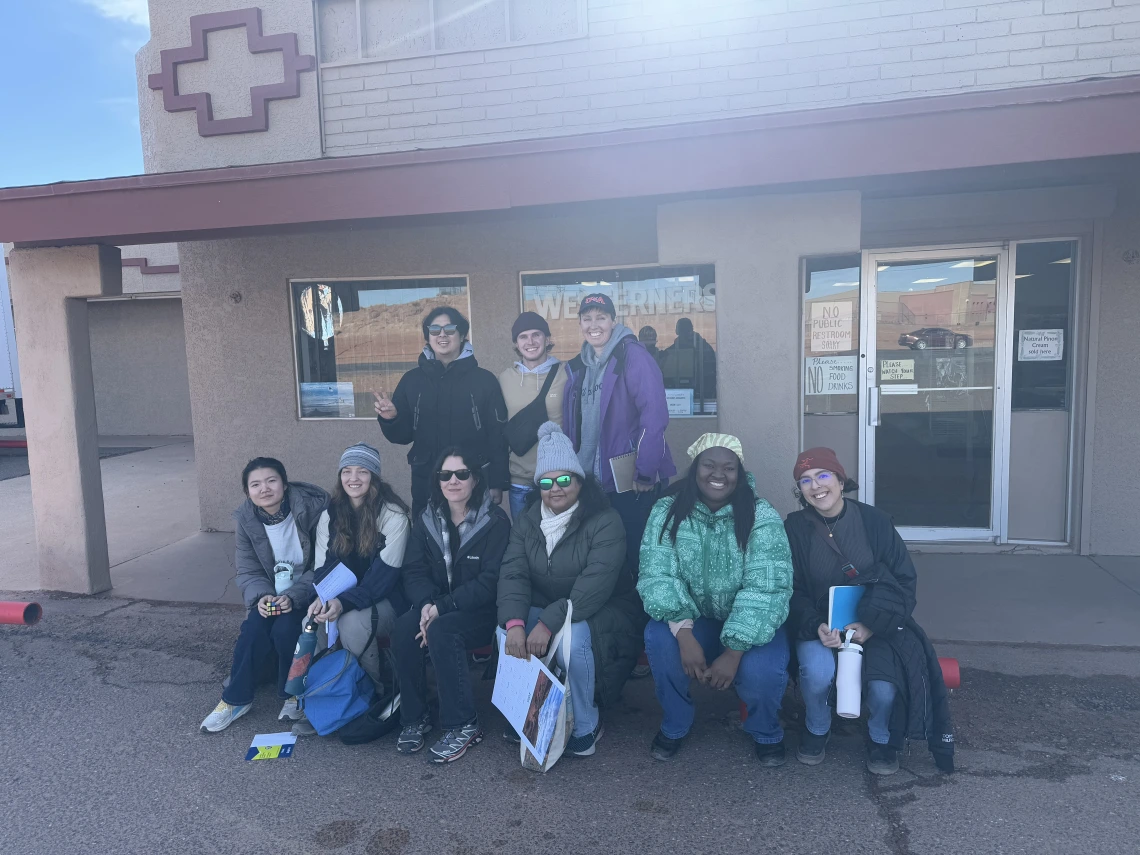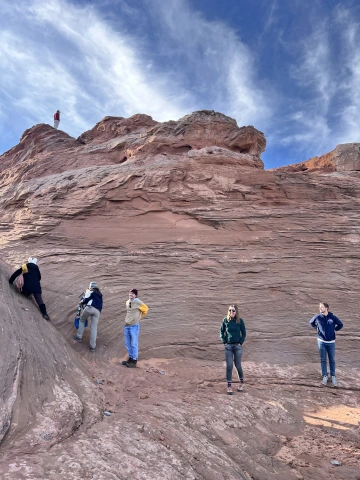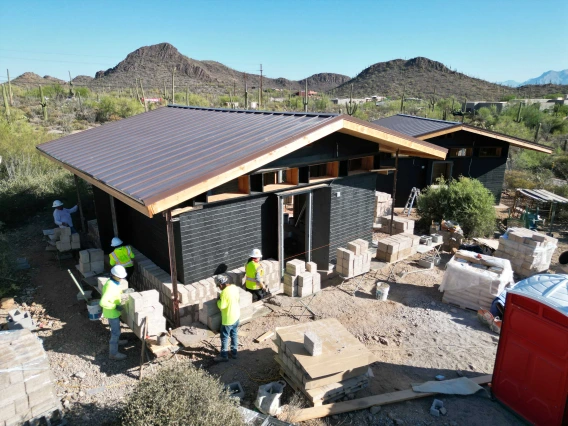CAPLA Students Visit Tuba City

Senior Lecturer in Architecture Laura Carr took 11 students in her ARC 510E “Master of Architecture Community Studio” course to visit Tuba City, a Chapter of the Navajo Nation.
Carr, co-founder of the Native Peoples Design Coalition, said creating opportunities for future architects to engage meaningfully with Tribal communities in Arizona is a crucial part of her work.
“Each year, we select a project initiated from one of our Arizona Tribal communities, and our students work directly with that community to ideate different architectural or planning solutions,” Carr said.
The students began their semester with a variety of planning and economic development documents that focused on the Western Navajo Region.
In the third week of the semester, they traveled to Tuba City, where they met with the Tuba City community development manager and Tuba City Chapter Officials to identify a site to study, which included a mix of civic, cultural, recreational and housing facilities.

During their visit, they toured the area, explored the Tuba City Outdoor Market, shopped in local stores, hiked in nearby recreation areas, saw dinosaur tracks, documented the project site and learned how to make fry bread at the Chapter House.
For Master of Architecture student Alondra Azurdia, the experience showed her the importance of being able to think on your feet as an architect.
“While we were in Tuba, we walked two sites, which made us quickly realize our original site wasn’t suited for the type of architecture we were planning to design,” Azurdia said. “We found a new site as a solution and it was really awesome to see our professor think about it on site in real time.”
Carr saw community-engaged work with Tribes as a great opportunity for the future architects taking her course to build a better world, a core element of CAPLA’s mission.
“The hope is that this group of students will finish the semester with a deeper understanding of what it means to be part of a Tribal community, that they will feel empowered to build authentic and respectful relationships with the people they work with and that they will incorporate community-driven design processes into the core of their professional practice,” Carr said.
Azurdia reflected on what she learned.
“It underscored the importance of recognizing that as I continue my education, I must remain mindful that architecture significantly impacts social infrastructure,” she said. “It is crucial that the individuals who will experience these spaces daily are actively included in the design process.”



